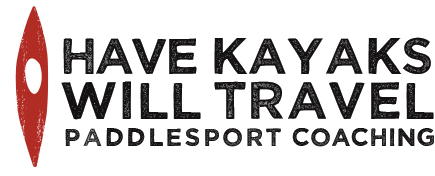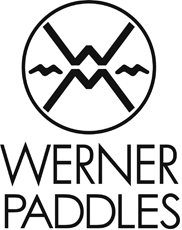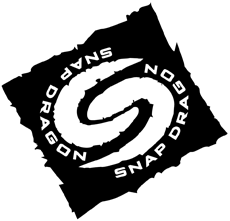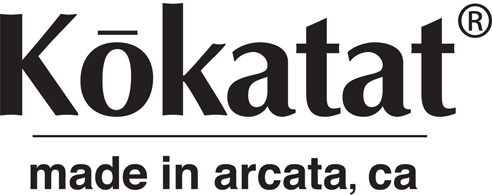This is the season of changeable weather. And Lake Michigan is highly responsive to those changes. One day it feels like fall, with strong winds out of the north, big waves, abandoned beaches and a chill in the air; the next it feels like summer, with warm breezes, gentle waves, motorboats zooming and the beaches full of bathers. Yesterday we had the beach to ourselves. And the water, too. Today we worked on rescues with our friend Bonnie. And paddled past skyscrapers, sailors, motor boaters and beach volley ball players. It would be easy to favor one type of day or the other, but we love both. On rough-water days, we can surf waves and play in clapotis. On calmer days, we can practice rescues and paddle some distance. Both prepare us for the real range of situations we encounter over time, and both are...
The pleasures of a Level 4 class
It’s not often that we get to coach higher-level classes. In the great pyramid of kayak lessons, beginners form the base. Comparatively few people seek out instruction after they’re solid intermediates.* So it was a pleasure for Sharon to spend Memorial Day weekend teaching a Level 4 Open Water Kayak Training for Geneva Kayak Center with Scott Fairty, one of our coaching mentors. Designed to help participants work on the skills they’ll need for an American Canoe Association Level 4 coastal skills assessment or a British Canoe Union four-star sea leader assessment, this course simulates tidal features by using the Menominee River in Wisconsin and then chases exciting conditions on Lake Michigan and Lake Superior for wind, waves and surf. The large-volume Menominee River provides current and class I and II rapids–perfect for working on eddy turns, peel-outs, attainments and ferry glides. The Menominee is one venue that allows midwestern paddlers to develop skills needed for paddling in ocean currents. In addition to moving water, it offers eddies, overfalls and other ocean-like features. It demands precise maneuvers of paddlers who wish to avoid getting washed downstream and hung up on rocks. We spent the first day on the skills necessary to successfully enter and leave eddies, ferry across the river and attain upstream. Storm coming in. Load the boats and head for the water! Then, as predicted, the sky clouded over, the wind picked up, and the temperature dropped. The weather was custom-made for a Level 4 course in the Apostle Islands, so we loaded up and drove to Lake Superior, where the forecast for the next day was winds of 15 to 25 knots out of the northeast and waves of 5 to 7 feet. Near shore, the waves were far smaller, allowing for some practice launching and maneuvering in conditions. We paddled out to Sand Island, beloved for its sea caves, where we had lunch in the refuge behind a park service building. Lunch the the lee of a park service building. Then we set out in search of larger waves, which we found slightly further along the shore. We paddled out into 5- to 7-foot waves with the wind howling in our ears, then turned around and paddled back with the wind and waves behind us. These are serious white-knuckle paddling conditions for intermediate paddlers; these participants impressed us with their mental and physical fortitude. They’re also challenging conditions for navigation and course plotting because the wind figures into the calculation. We practiced various ways of accounting for the push of the wind, and ended the day exploring the power of the waves along the shoreline. We debriefed over pizza (“Serves five? We’ll take two of...
Rescue Me! Thursdays offer free training
Tom Lindblade (far left) and Scott Fairty (second from left) with some of the participants in a recent Rescue Me! Thursday. This is year two of Rescue Me! Thursdays, an initiative of the Illinois Paddling Council. These weekly training sessions were initially created in order to train the Paddlers Patrol, another IPC initiative–a volunteer group that provides safety boaters for local events, such as the Flatwater Classic, the Illinois Paddlesports Festival and the New Year’s Day Paddle. The concept is simple and smart: Take advantage of the Marge Cline Whitewater Park in Yorkville, IL and the expertise of Ryan Rushton and Scott Fairty of Geneva Kayak Center (located on the course) to offer weekly training sessions on basic swiftwater rescue. The brains behind this belong to Tom Lindblade, president of the IPC, who has been an experiential educator and canoe instructor for more than four decades and was recognized three years ago with an “Excellence in Instruction” award by the American Canoe Association. Tom Lindblade, mentor to two generations of paddlesport instructors and president of the Illinois Paddling Council. We had the good fortune to be present for this past week’s session on wading rescues. This was the fourth in this year’s series, following cold-water rescues, rescue ropes, and boat-over-boat rescues. Lindblade teaches most of the classes, with help from Scott Fairty. Towing, bumping and unpinning boats will follow in the coming weeks. The group wades into the river, using paddles for support. “Imagine if someone who was rescue-trained had been there when those three men died in the dam,” Lindblade says, referring to the tragic incident in 2006 that led, years later, to the demolition of the deadly Glen D. Palmer Dam and the creation of the whitewater course in Yorkville. “That kind of thing can happen any time, and now we’ve got whitewater in the area, so these skills become more necessary.” Scott Fairty (green helmet) takes six participants safely out into the current. Attendance has been good: between 9 and 17 people per week. The training is free (though non-ACA members must pay $5 for insurance when they sign the liability waiver) and no reservations are required. Just show up at the whitewater park at 6 p.m. on Thursdays in May, and you’re part of the class. Alec simulates a pin on a rock. “This is one of the most important things we can do,” Lindblade...
Dynamic Trio? A study in green
During our recent Instructor Certification Exam, we had the opportunity to try out several boats we hadn’t paddled before, including the Jackson Fun Runner and the Jackson Dynamic Duo. For a moment, it appeared that we had created a Dynamic Trio. Jim Tibensky, Scott Fairty and Alec...
No need for solid paddling and rolling skills!
All that training was for naught.
River Kayak IDW/ICE — done!
Have Kayaks, Will Travel: whitewater edition. The first kayak class we took was offered by the Chicago Whitewater Association (CWA) at our local YMCA. A group of dedicated paddlers taught us to roll and paddle in the pool and on local rivers. But we soon discovered sea kayaking, and nearly all of our paddling time and effort was focused on longer boats and larger bodies of water. We still assisted at the pool class we previously took, and we eventually took over as lead instructors. But our hearts belonged to open water. And so did our certifications. Then Geneva Kayak Center moved to the Marge Cline Whitewater Course in Yorkville, IL, and our interest in river paddling was rekindled. We spent considerable time playing on the quarter-mile course, took an Instructor Development Workshop with Kent Ford, traveled to Wisconsin to paddle rivers with the other staff at Geneva Kayak Center, and finally enrolled in an IDW/ICE (Instructor Development Workshop/ Instructor Certification Exam) with Instructor Trainer Educator (ITE) David Su and Instructor Trainer (IT) candidate Scott Fairty this past week. Scott Fairty (left) and David Su (right) conferring before the start of our IDW/ICE. We expected the process to be intense. The combination of training and assessing is meant to be challenging, both mentally and physically. And it was. The IDW began with a trip on the Vermillion River in Illinois. Here, instructor candidate Jim Tibensky leads a session on ferrying. David Su scouts Wildcat, the much loved drop on the Vermillion… …and then runs it. During an IDW/ICE, candidates are typically required to demonstrate paddling and rescue skills, effective coaching techniques, and knowledge about the type of paddling in which they are seeking certification. Alec conducts a spontaneous parking lot forward stroke lesson. David Su and Greg Anderson demonstrate a method for emphasizing torso rotation and shoulder protection during a sweep stroke. They also benefit from demonstrations by the ITE and/or IT about how to teach various skills. Sharon plays the part of a student as David demonstrates wet exit instruction. Different craft, different paddle, but many of the same techniques: We worked on canoe skills, too. Then we got an inch of rain in a 24-hour period and the Vermillion, which had been running at 1,100 CFS swelled to 11,000 CFS. When it dropped back to a healthy 5,500 CFS, we took the opportunity to run it again, this time with pushier water and some more challenging features. Greg surfs the top wave near the put-in. Sharon runs Wildcat on river left at the higher level. On flatter sections between features, David introduced us to an activity he uses in the pool: the “air loop”–a flip over another paddler’s...
Sea kayak instruction in motion
I’ve been pondering the idea of coaching on a journey for a few years, and so it was a pleasure to put this into practice on a recent “destination course” I was able to assist with circumnavigating Cumberland Island, Georgia, for the Geneva Kayak Center. Our group met up in historic Saint Mary’s, where we packed our boats, reviewed tidal planning and created a trip plan. The trip began with a navigation lesson, led by Ryan Rushton (far right). The location lends itself to this sort of trip. It features tides, currents, twisty rivers, islands and open ocean shoreline exposed to Atlantic swell. The environment poses excellent opportunities to learn and practice navigation, leadership, and rough-water skills. Christmas Creek, en route to the ocean. Which isn’t to say that there isn’t also a lot to see, explore and admire along the way. Cumberland Island has a distinctly southern feel. It’s home to several historic former Carnegie family homes, feral horses, and sleepy pin oaks draped in Spanish Moss. The ruins of Dungeness, which burned in 1959. A lunch spot along the way, with Spanish moss hanging overhead. Over the course of five days, there were ample opportunities for learning, many inspired by actual conditions and events. Sometimes these were on the water, and other times while together in camp. They included spontaneous rescues, discussion about vector planning, and real-life examples of leadership in action. All arose organically. Practicing self-rescues in conditions. Pondering the fine points of vector angles. In the end, destination courses are an ideal way to teach and learn, and they offer lots of ideas for incorporating into everyday coaching. —...
A hiatus on posting but not on paddling
Sometimes you blink and six weeks go by. The innocuous question,”What have you been up to?” is completely overwhelming. “What haven’t we been up to?” you want to reply. In situations like these, a picture truly is worth 1,000 words. Especially if it includes captions. So catching up… We spent a lot of time loading and unloading boats, both whitewater and sea kayaks. April started out warm; water at the Marge Cline Whitwater Course rose to 62 degrees at times. Lake Michigan remained cooler — in the mid to upper 40s — but what little ice we had was long gone . We were fortunate to borrow a Delphin 150 for a few weeks. This low-volume version of the hot “new genre of free-ride sea kayak” is a blast in waves, and a good fit for smaller paddlers. We were also able to do some training on the Menominee River in long boats… …including the Delphin 150… …where we benefitted from some top-level coaching from Ryan Rushton… …and Scott Fairty… …who make everything look as easy as it should be and as fun as it is. Alec took a detour to Cumberland Island, Georgia, where he helped guide a circumnavigation. That’s pretty much what we’ve been up to. That, and failing to post to our blog. And a few other things. But more about that...
Why Canoecopia continues to matter
Mention Canoecopia to midwest paddlers and they fairly glow with pride. The world’s largest paddlesport expo happens here–in Madison, Wisconsin, to be precise–every March. Take that, coastal paddlers! Kelly Blades, P&H Midwest Guy, shows Sharon the new Delphin 150. Canoecopia is a hybrid trade show and symposium. The expo hall is filled with vendors of boats, paddles, spray decks, clothing, safety gear, tents and other paddling and camping necessities, along with outfitters, schools, publications and more. Meanwhile, there are ten presentations every hour for two and a half days on a wide variety of topics, and the entrance hallway is lined with clubs, nonprofit groups and other organizations. Shawna Franklin and Leon Somme of Body Boat Blade present “Tow Systems,” dispelling many misconceptions about this essential piece of safety gear. Many people come for the access to an astonishing variety of gear and the 15 percent discount. But to view Canoecopia as a chance to get deals is to miss the point. Rather, we’re drawn to Canoeopia every year because it’s an opportunity to see and touch all that’s new, to hear the latest ideas and learn about the adventures and innovations of the movers and shakers in paddlesport, and to connect or reconnect with friends and contacts throughout the industry. Nigel Dennis talks to a customer about his SKUK boats. Here, under one roof, you can have a detailed discussion with Nigel Dennis, owner of SKUK and designer of its boats; Peter Orton, who designs the Valley line; and Graham Mackereth owner of P&H. You can talk with the top salespeople for paddling gear manufacturers, like Danny Mongno of Werner Paddles, Brian Cooke of Level Six and Jeff Turner of Kokatat. You can get maps and guidance from Parks Canada, sign up for a course with Wilderness Medical Associates, and talk to the publisher of the Rapid Media magazines. As Morgan Goldie, sales manager of Northwater, mentioned in an off-hand comment, “If the roof caved in right now, we’d lose the brain trust of paddlesport. It would be devastating for North America.” A wristband-wearing customer tries on a new helmet. Fortunately, the roof didn’t cave in. It was the biggest show yet, measured in traffic and sales, but by midnight on Sunday, Canoecopia had packed up and left. And true to the outdoor ethic of leave-no-trace, the Alliant Energy Center shows no evidence that Canoecopia was ever...
Dry land river reading activity
Smurf avoids the hydraulic with the log stuck in it. Our 10-week spring kayaking class at the local YMCA is almost over. We’ve spent time teaching rolling and basic strokes in a small pool augmented only by slalom gates and our own imaginations. Some of our activities are of our own creation, but one we owe entirely to Tom Lindblade, president of the Illinois Paddling Council, instructor trainer for countless canoe instructors, instructor to countless canoe students, advocate for local waterways and paddlers…in short, a mentor to us all. It’s the “river in a box.” Simply put, it’s a long piece of denim on a gradient with some pieces of yarn and a bunch of rocks, sticks and other river accessories. Ours also features pillow stuffing to simulate whitewater, and a Smurf paddler with an awesome helmet you can’t buy in any larger size. After showing a short film clip about river reading and talking about river features, how they’re created and how they affect paddlers, we had our students create the river banks and eddy lines with the yarn and place the rocks, twigs and stuffing on the river. Then we looked at what our Smurf would experience as he headed down the river, choosing safe routes and play...







